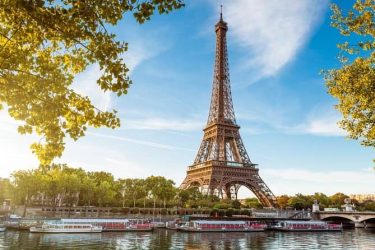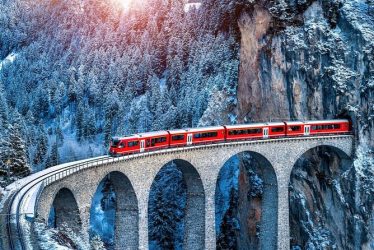Rome, Italy, is a city that effortlessly blends ancient history with modern-day charm, offering visitors a truly unique travel experience. Known as the Eternal City, Rome is a place where the past and present coexist harmoniously, and where iconic landmarks like the Colosseum and the Vatican coexist with stylish cafes, bustling piazzas, and trendy boutiques.
Whether you’re a history buff, art lover, foodie, or simply someone who wants to explore one of the most beautiful cities in the world, Rome has something for everyone. This comprehensive guide will help you navigate the must-see sights, local culture, dining options, and tips for making the most of your time in the city.
Getting to Rome
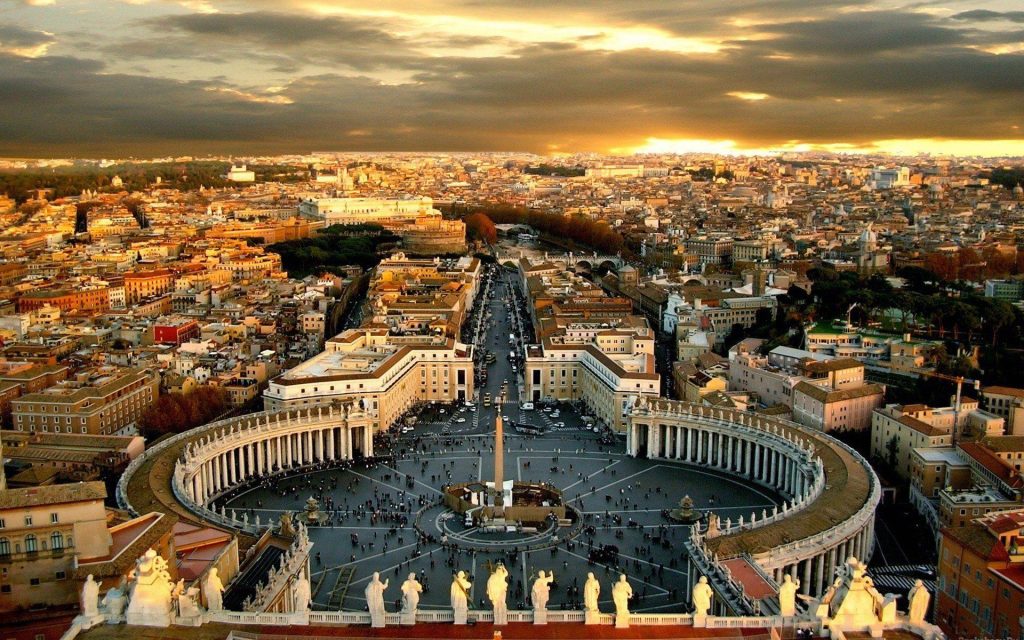
By Air: Rome is served by two main airports—Leonardo da Vinci International Airport (Fiumicino) and Ciampino Airport. Fiumicino is the larger of the two and handles international flights, while Ciampino caters to low-cost carriers. From both airports, you can take a train or taxi to the city center, or use ride-sharing apps.
By Train: Rome’s central train station, Termini, is well-connected to major cities across Italy and Europe, making it easy to travel by train to Rome. The station also connects to the metro and bus networks.
By Car: While renting a car is an option, driving in Rome can be challenging due to heavy traffic and limited parking. Public transportation is more convenient for tourists.
Best Time to Visit

Spring (April to June): This is one of the best times to visit Rome. The weather is warm but not too hot, and the city is less crowded compared to summer.
Fall (September to October): Similar to spring, fall offers pleasant temperatures and fewer tourists. It’s a great time to explore the outdoor attractions.
Summer (July to August): While the summer months bring higher temperatures and more tourists, they are also the time for festivals and events. Be prepared for higher prices and crowded spots.
Winter (November to March): If you prefer a quieter experience, winter offers fewer crowds and lower hotel prices. However, some attractions might have shorter hours.
Top Attractions in Rome
The Colosseum

The Colosseum is Rome’s most iconic landmark and one of the most famous structures in the world. Built in 70 AD, this ancient amphitheater was the site of gladiatorial contests and public spectacles. A visit here will give you a glimpse into Rome’s grand imperial past.
Tip: Book a skip-the-line ticket in advance to avoid long queues.
The Vatican and St. Peter’s Basilica
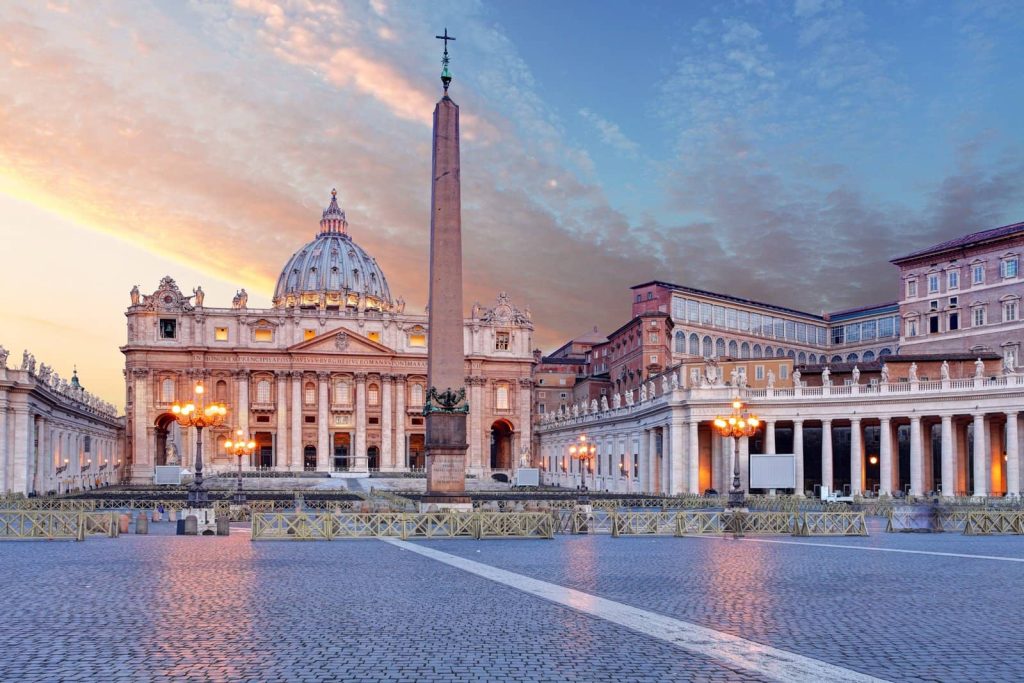
The Vatican is the smallest independent state in the world and a must-see for any traveler to Rome. St. Peter’s Basilica, one of the largest churches in the world, is a masterpiece of Renaissance architecture. The Vatican Museums house an extensive collection of art, including the world-renowned Sistine Chapel ceiling painted by Michelangelo.
Tip: Consider booking a guided tour to fully appreciate the Vatican’s rich history.
Pantheon

This ancient Roman temple, now a church, is renowned for its stunning architecture. The Pantheon features a massive domed ceiling with a circular opening, or oculus, that allows light to pour into the interior.
Trevi Fountain
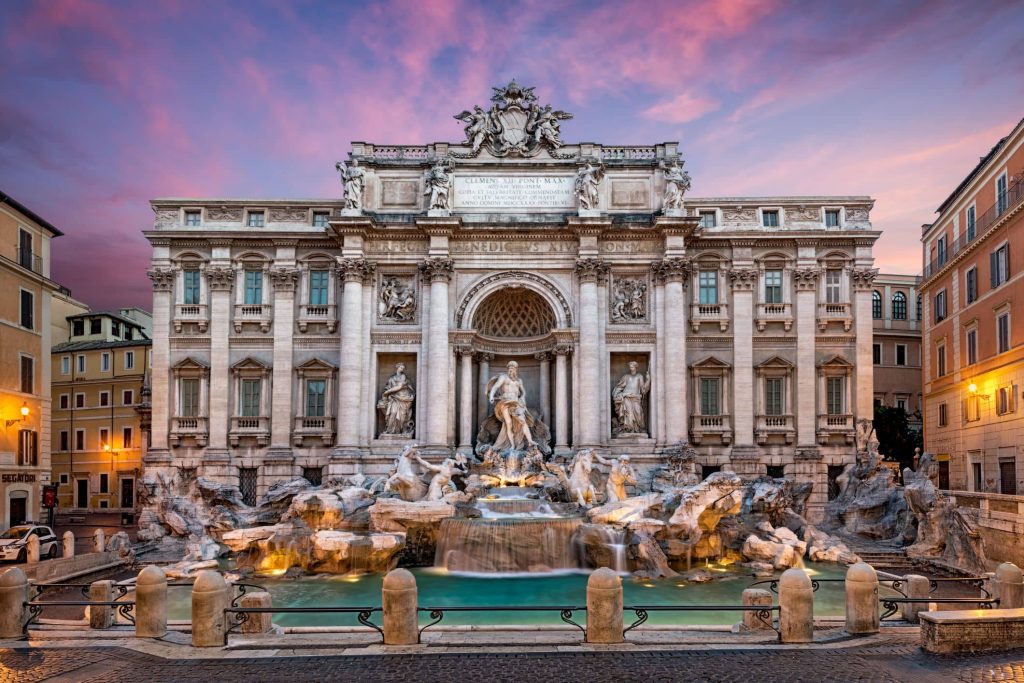
The Trevi Fountain is one of Rome’s most famous landmarks. Legend has it that if you throw a coin into the fountain, you will return to Rome. The fountain is a great spot for photos, especially at night when it’s beautifully illuminated.
Roman Forum

The Roman Forum is an archaeological site that was once the heart of ancient Roman life. Here, you can explore the remains of temples, markets, and government buildings. It’s a fascinating place to learn about Rome’s history.
Piazza Navona

Piazza Navona is a charming square filled with Baroque fountains, street artists, and cafes. The square is home to Bernini’s famous Fountain of the Four Rivers and offers a vibrant atmosphere day and night.
Exploring Rome’s Neighborhoods

Trastevere: This charming neighborhood offers narrow cobblestone streets, vibrant nightlife, and excellent restaurants. It’s a great place to wander, soak in the atmosphere, and enjoy authentic Roman cuisine.
Monti: A trendy area with a mix of bohemian charm and modern flair. Monti is known for its boutique shops, art galleries, and cafes, making it an ideal place for a laid-back afternoon.
Centro Storico: The historic center of Rome is where you’ll find most of the major landmarks like the Pantheon, Piazza Navona, and the Trevi Fountain. It’s an area filled with ancient history, cafes, and piazzas.
Prati: Located near the Vatican, Prati is a quieter, more residential area with excellent shopping options and restaurants. It’s ideal for a relaxed stay away from the hustle and bustle of the city center.
Accommodation in Rome

Rome offers a wide range of accommodations to suit every traveler’s needs and budget. Luxury seekers can indulge in world-class hotels like “Hotel de Russie“ or “The St. Regis Rome”, known for their elegant designs and premium amenities, often located near iconic landmarks like Piazza Navona or the Spanish Steps.
For mid-range options, cozy hotels like “Hotel Artemide” or “Hotel Navona” provide excellent value with comfortable rooms and convenient locations. Travelers on a budget can choose from hostels like “The Beehive” or guesthouses such as “Casa San Giuseppe” in the charming Trastevere neighborhood.
Unique stays, including boutique B&Bs, historic villas, and monasteries, offer memorable experiences and a glimpse into Roman culture.
Dining and Food in Rome

Roman cuisine is known for its simplicity and emphasis on fresh, local ingredients. Be sure to try these iconic dishes:
- Cacio e Pepe: A Roman pasta dish made with Pecorino Romano cheese and black pepper.
- Carbonara: A creamy pasta dish made with eggs, guanciale (cured pork cheek), and Pecorino cheese.
- Supplì: Fried rice balls stuffed with mozzarella and tomato sauce.
- Pizza al Taglio: Roman-style pizza served by the slice, often with creative toppings.
- Gelato: Don’t miss out on Italy’s famous ice cream, available in a variety of flavors.
For an authentic experience, head to local trattorias or pizzerias, especially in neighborhoods like Trastevere and Testaccio. These areas offer some of the best food in Rome.
Getting Around Rome

Rome’s public transportation system includes buses, trams, and the metro. You can buy a Roma Pass for unlimited travel on public transport and discounted entry to museums and attractions.
Walking: Many of Rome’s attractions are located within walking distance of each other, and walking is one of the best ways to experience the city.
Taxis and Ride-Sharing: Taxis are available, but they can be expensive. Ride-sharing services like Uber are also available in Rome, though not as widespread as in other cities.
Useful Travel Tips

Language: While Italian is the official language, many Romans speak English, especially in tourist areas.
Currency: The currency in Italy is the Euro (€).
Dress Code: When visiting churches and religious sites, dress modestly (cover shoulders and knees).
Tipping: Tipping is not mandatory in Italy, but it’s appreciated. Leave a small tip at restaurants if you’re satisfied with the service.
Pickpocketing: Be cautious in crowded areas like the Colosseum and the metro, as pickpocketing can be an issue.
Day Trips from Rome

Rome is well-connected to nearby cities and regions, making it easy to take day trips. Consider these options:
Tivoli: A charming town known for its beautiful villas, including Villa d’Este and Hadrian’s Villa.
Ostia Antica: An ancient Roman port city located near the coast, offering a fascinating glimpse into daily life during Roman times.
Pompeii and Naples: If you have more time, you can take a day trip to Pompeii to explore the ancient ruins or visit the vibrant city of Naples.
Conclusion
Rome is a city that offers endless opportunities for exploration, from its ancient ruins to its modern-day cafés. Whether you’re marveling at the Colosseum, strolling through vibrant piazzas, or savoring delicious Italian food, Rome never fails to impress. With a little planning and an adventurous spirit, your trip to the Eternal City will be an unforgettable experience. Buon viaggio!

Owen Samuel is a Destination Manager based in California, known for his expertise in creating unforgettable travel experiences. With a deep passion for tourism and local culture, he helps travelers discover the best places around the world.


